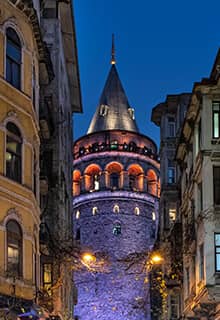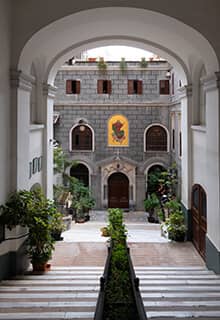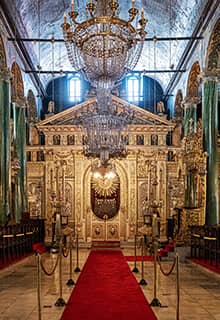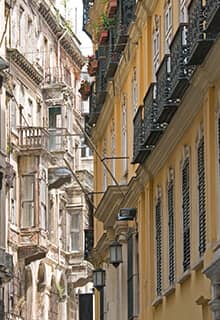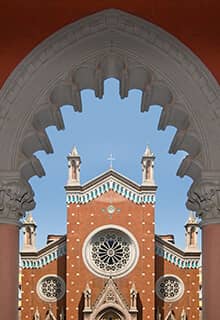

Cosmopolitan İstanbul
Karaköy – Galata – İstiklal Street – Taksim / İstanbul
From Karaköy & Galata to Taksim along the “Grand Rue de Péra”
On the banks of the Bosphorus and just across from the Historical Peninsula, Karaköy functions as the passage between old and contemporary. As the main port area and the center of trade and sea transportation, Karaköy became the melting pot of many cultures and faiths.
Surp Krikor Lusarovic Church of Galata is one of the oldest in the area and dates back to the 14th century. It’s been renovated several times with the additions of two adjacent churches. It has a single nave basilica plan with a dome with a conical roof.
Driven out of the Russian Empire by civil war, hundreds of thousands of White Russians found refuge in İstanbul a century ago, bringing with them their culture and community. Among three rooftop churches built above the old port buildings in 19th-century Karaköy, St. Panteleimon is the most visited one with its frescoes and icons.
A short walk from the 13th-century Genoese Galata Tower to İstiklal Caddesi will take you to the Church of St. Anthony of Padua. Together with the Catholic churches of St. Mary Draperis and Saints Peter and Paul in Galata, it was one of the three Levantine parishes in Beyoğlu. Built between 1906 and 1912 in the Venetian Neo-Gothic style, the Church of St. Anthony was designed by the Italian Levantine architects Giulio Mongeri and Edoardo de Nari. Pera’s sociospatial character represented the Ottoman Empire’s occidental-facing tendencies and character. Galata was evolving into a major mercantile port in the 1840s, and imported goods were abundantly displayed in the store windows on İstiklal Street. Pera had always been an ethnically diverse settlement area. The demographic structure consisted mainly of Levantines, and Greeks, Armenians, Jews, and Turks. Russians, Bulgarians, and Circassians were also parts of this ethnic diversity.
A stroll along the historical “Grand Rue de Péra,” today’s İstiklal Street, offers visitors a journey back to multicultural 19th-century İstanbul, where faiths and cultures blended. The Armenian Church of Three Altars (Surp Yerrortutyun Armenian Church, Uc Horan Kilisesi), designed by Garabet Balyan, Hamamcıbaşı Minas Agha and Hovhannes Serveryan, is an impressive landmark of the area. The Crimea Memorial Church, also known as Christ Church, is a 19th-century Anglican Church with unique Gothic architecture. The largest church on İstiklal Street, Hagia Triada Greek Orthodox Church (Holy Trinity) will meet you where İstiklal Street ends and merges into the city’s main square, Taksim. It was built in the 19th century as the first domed church to be built since Byzantine times.

